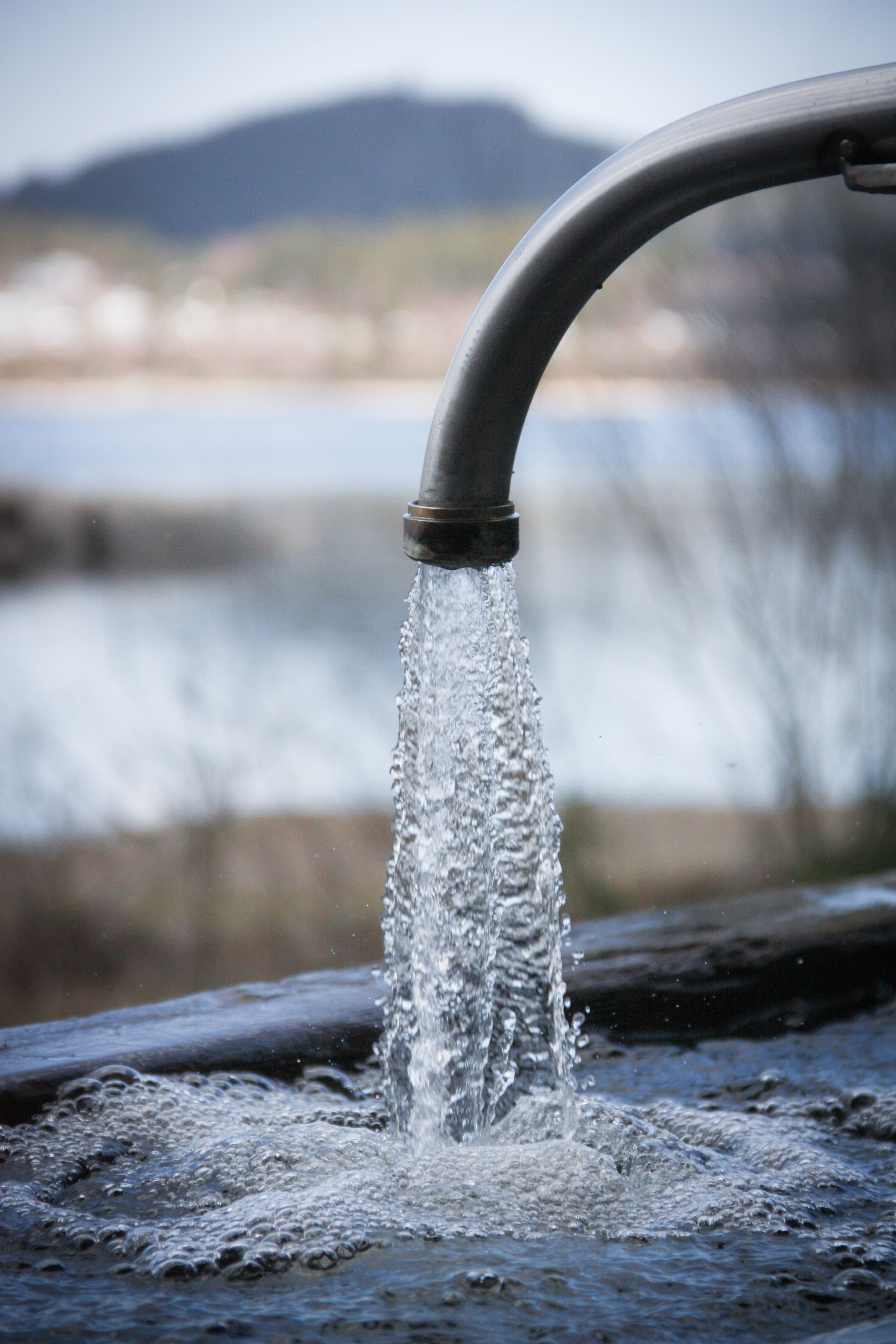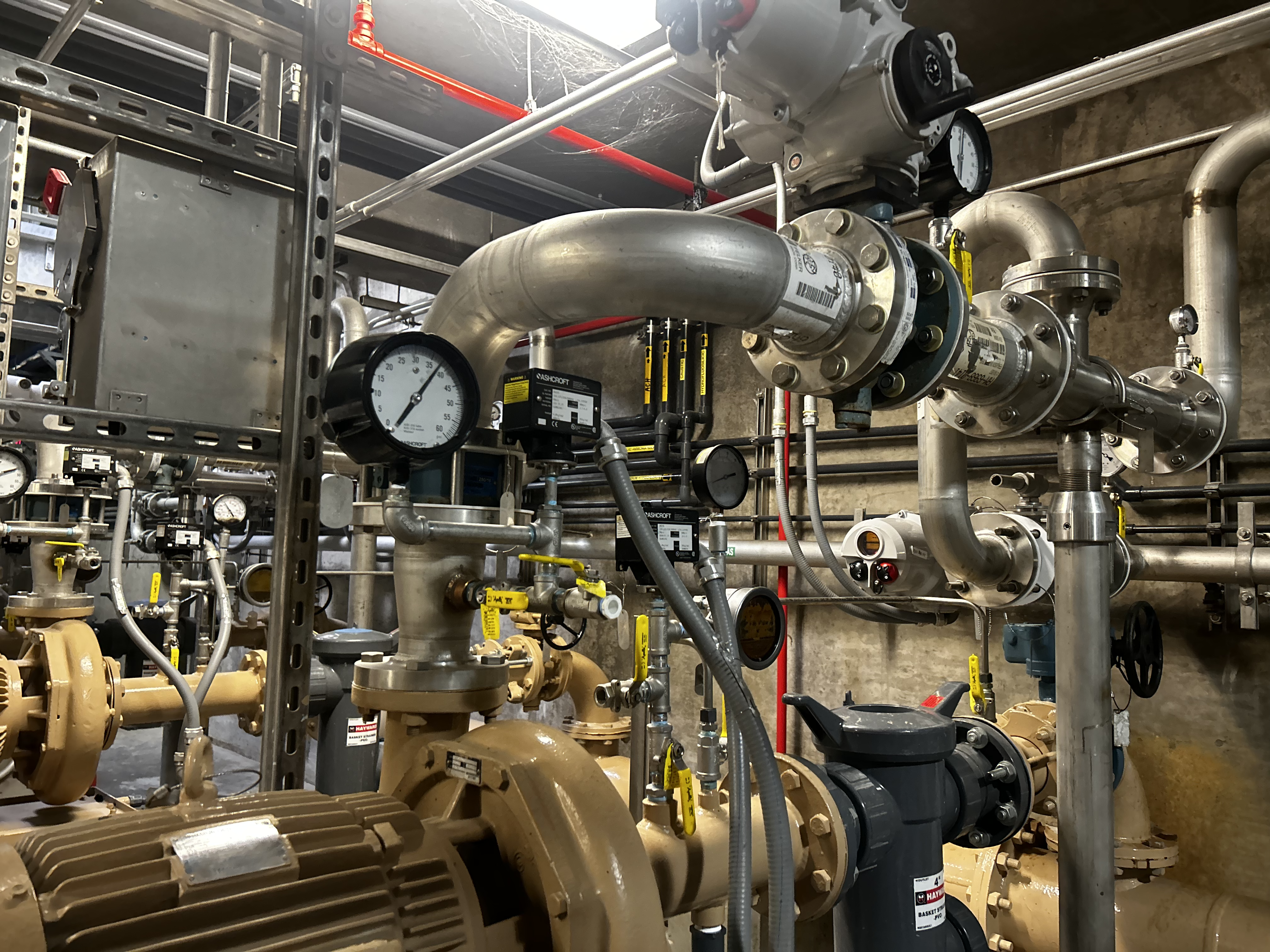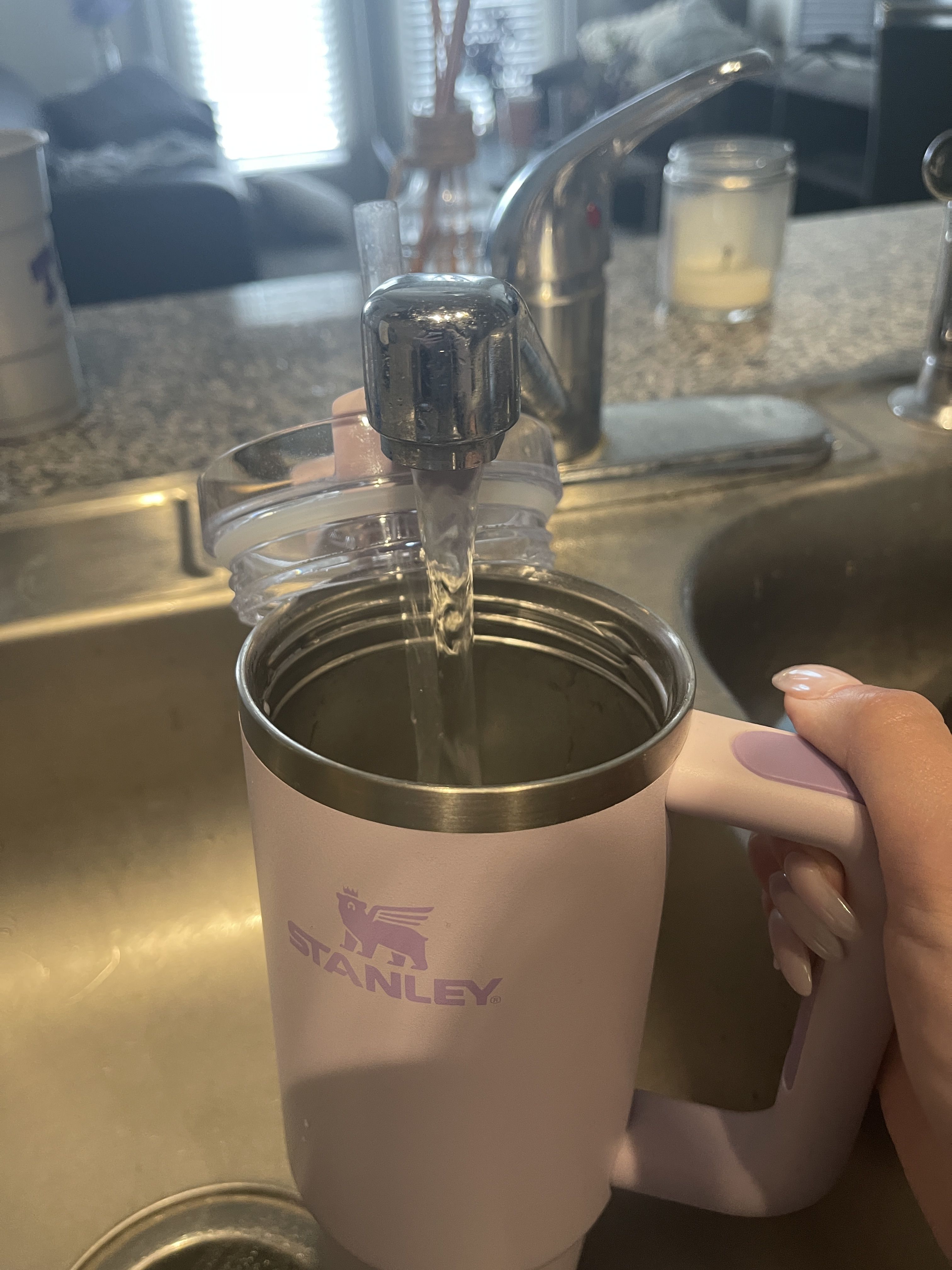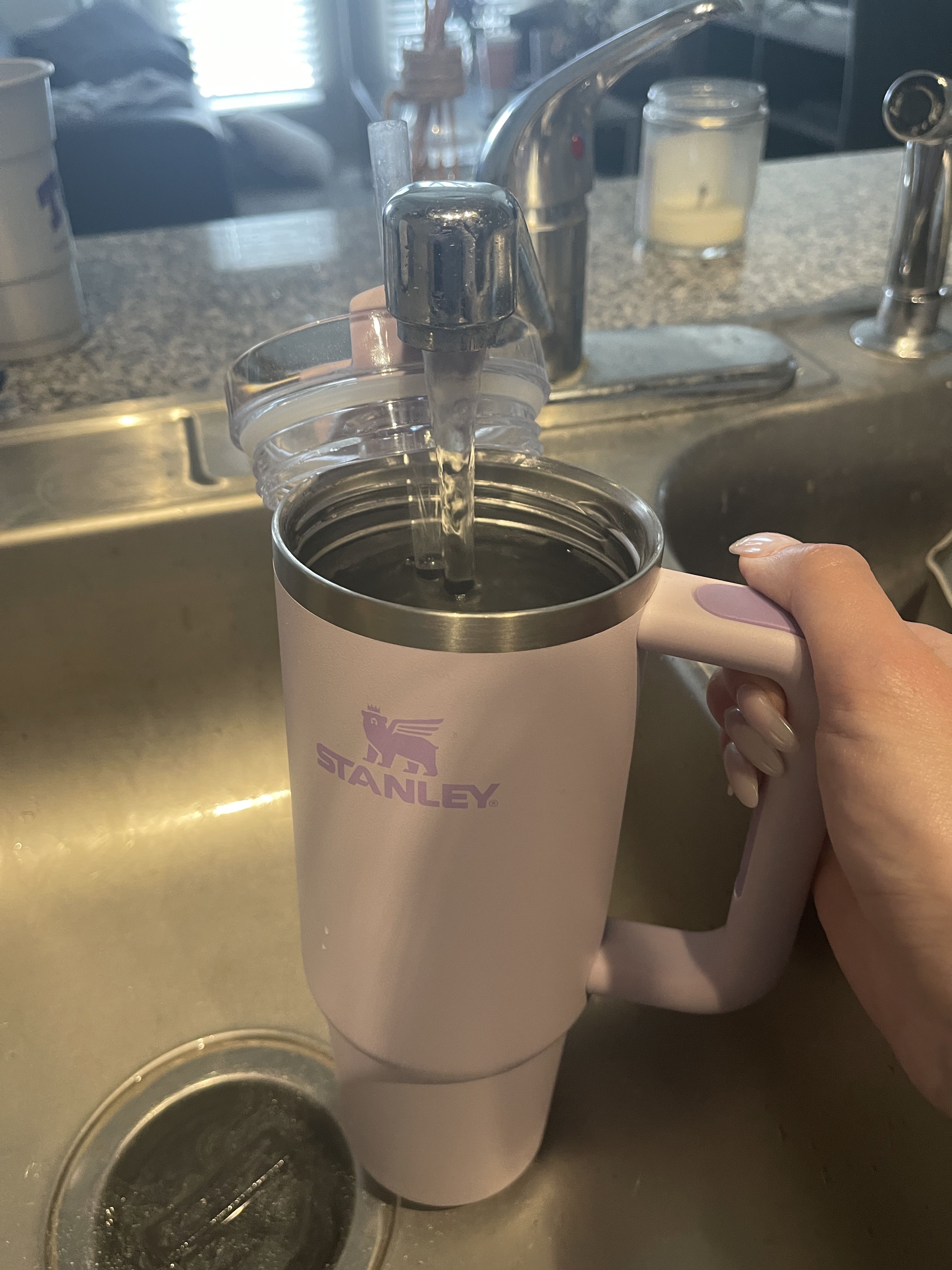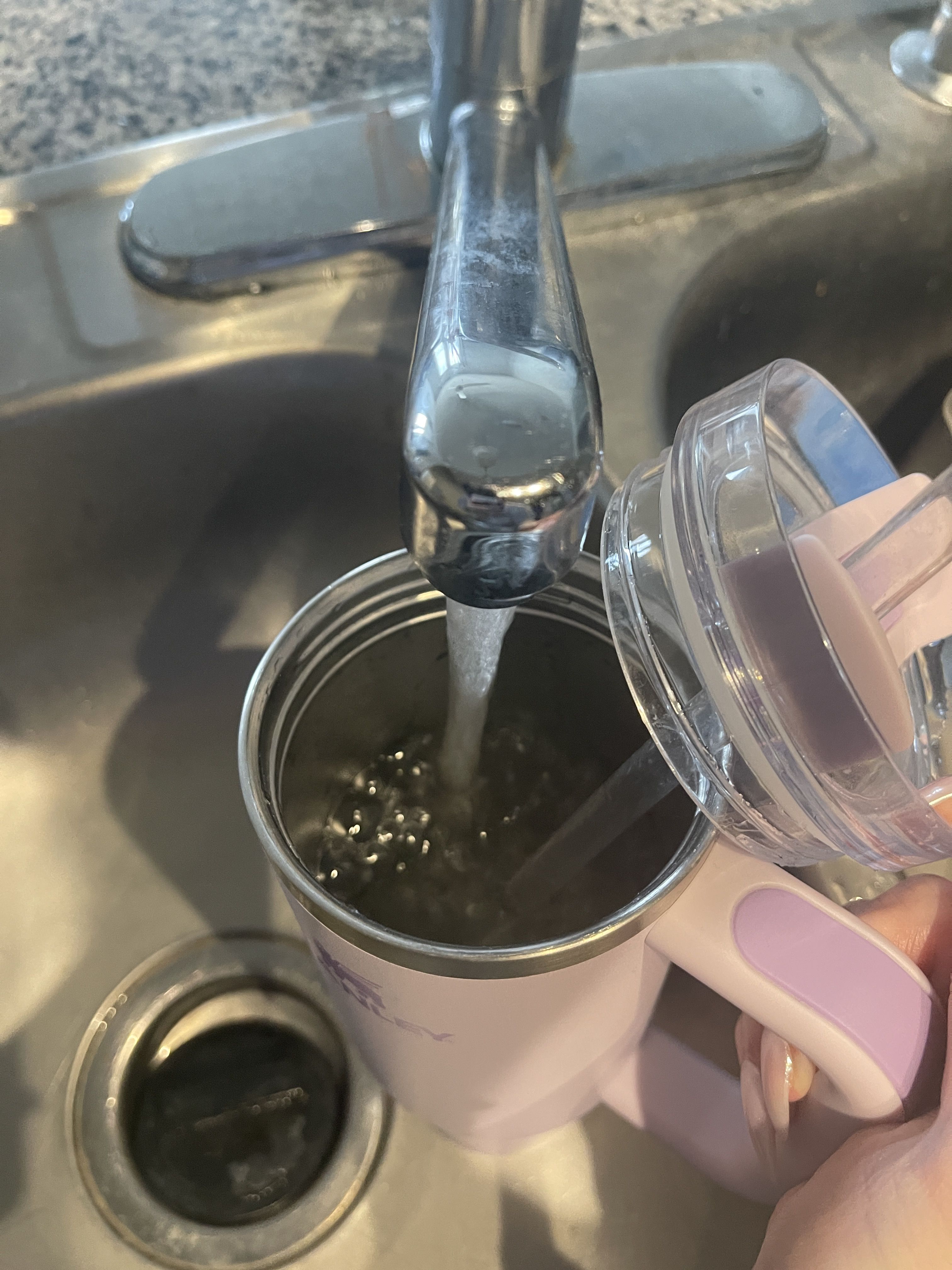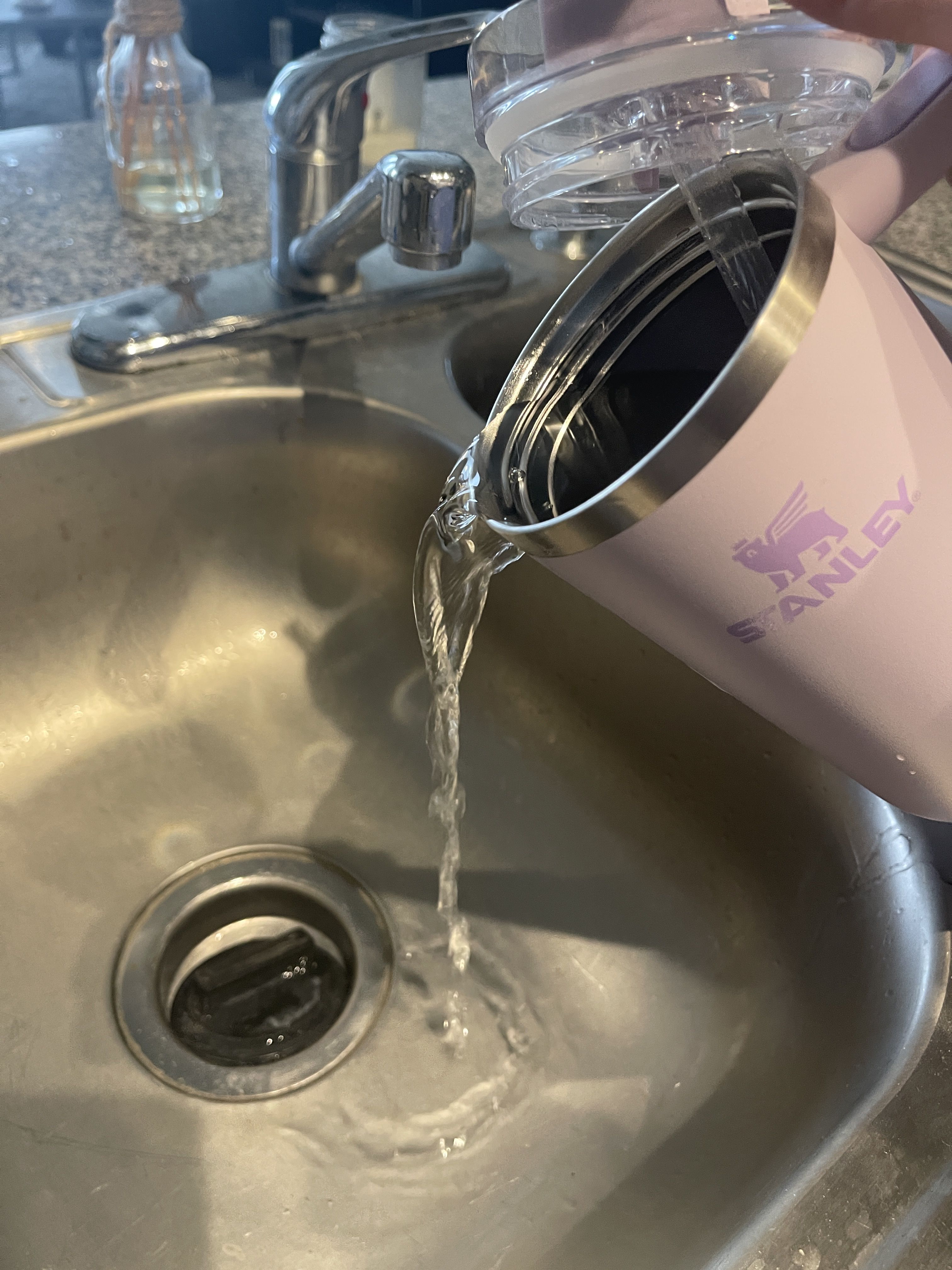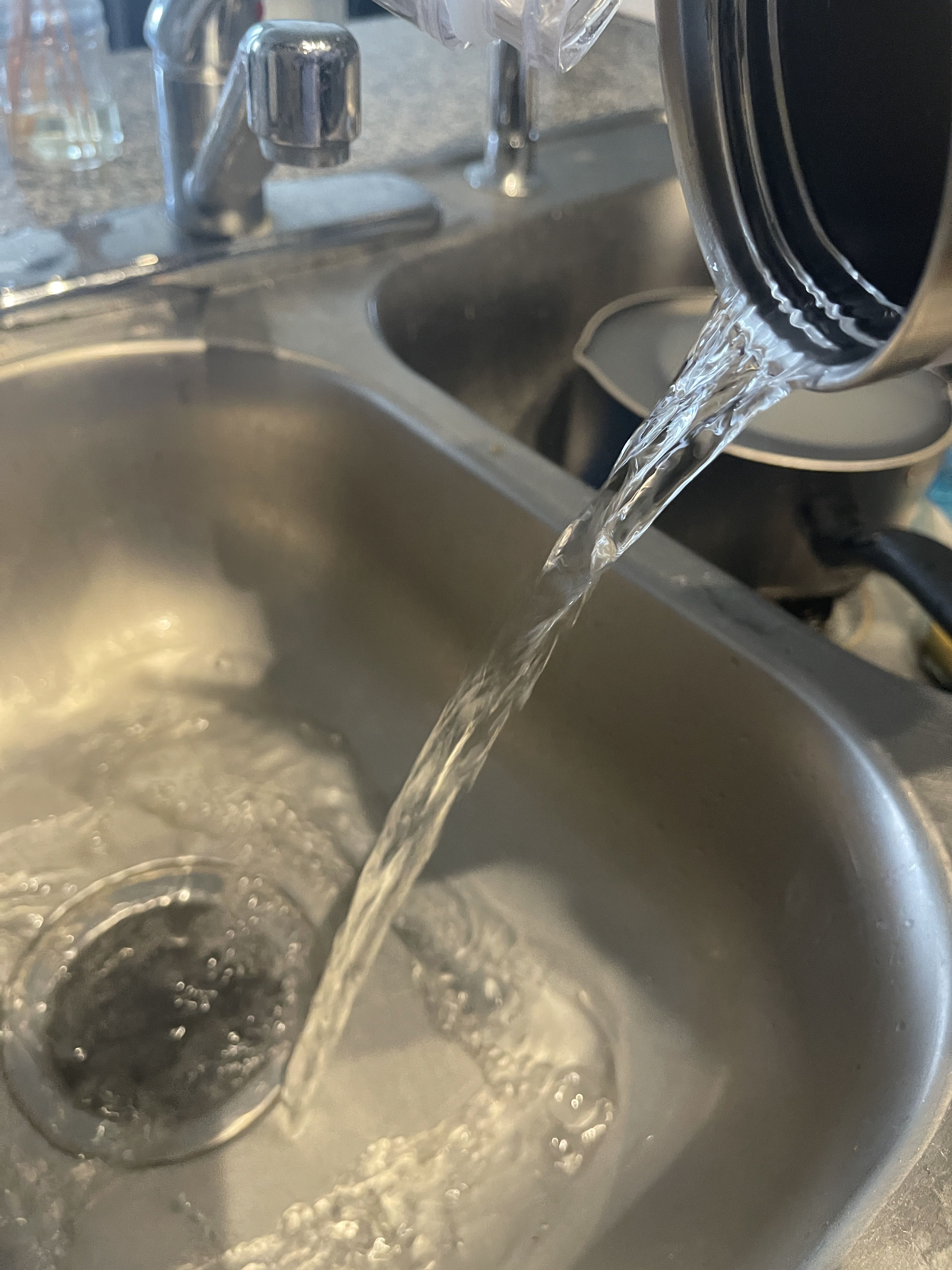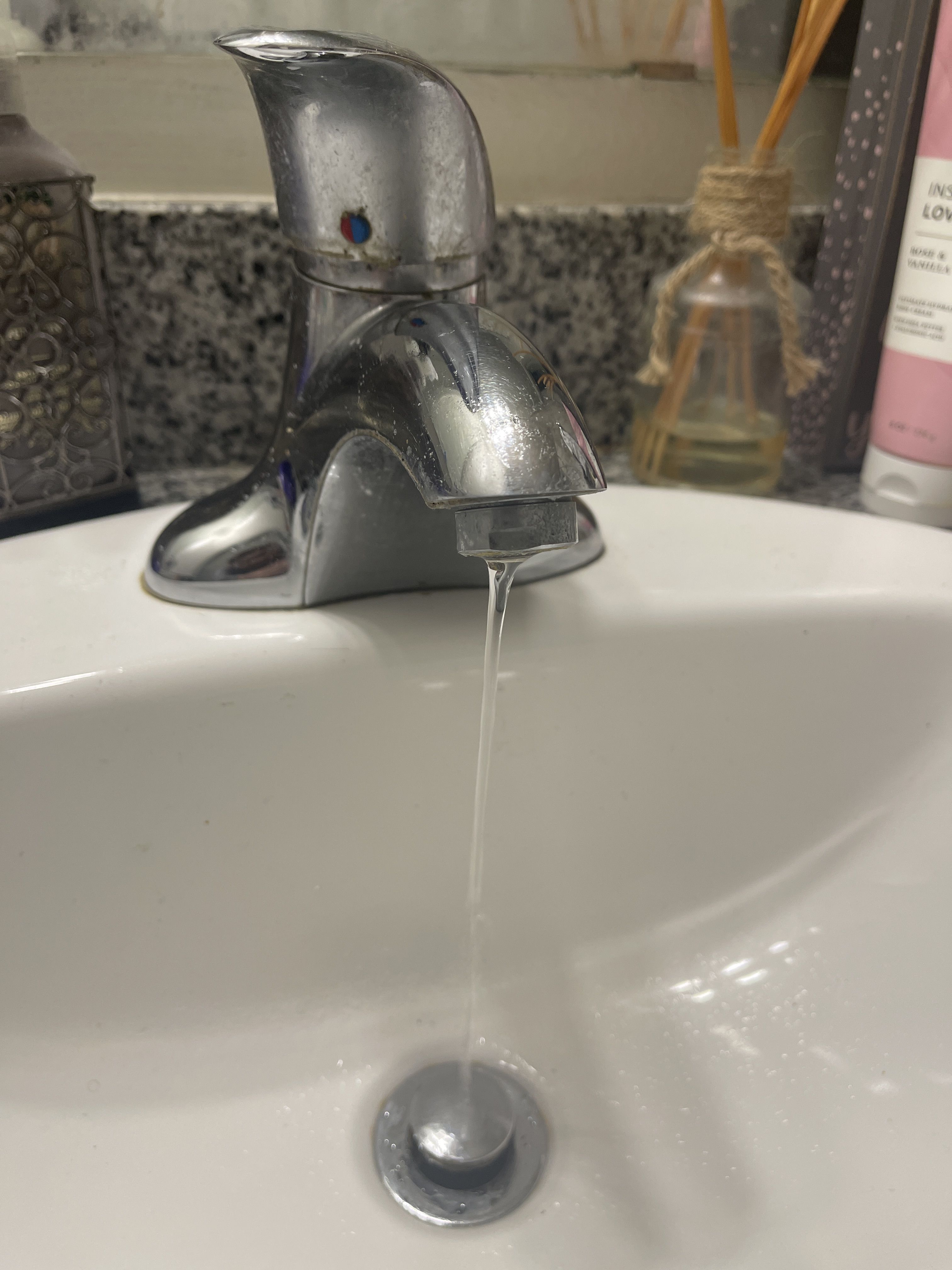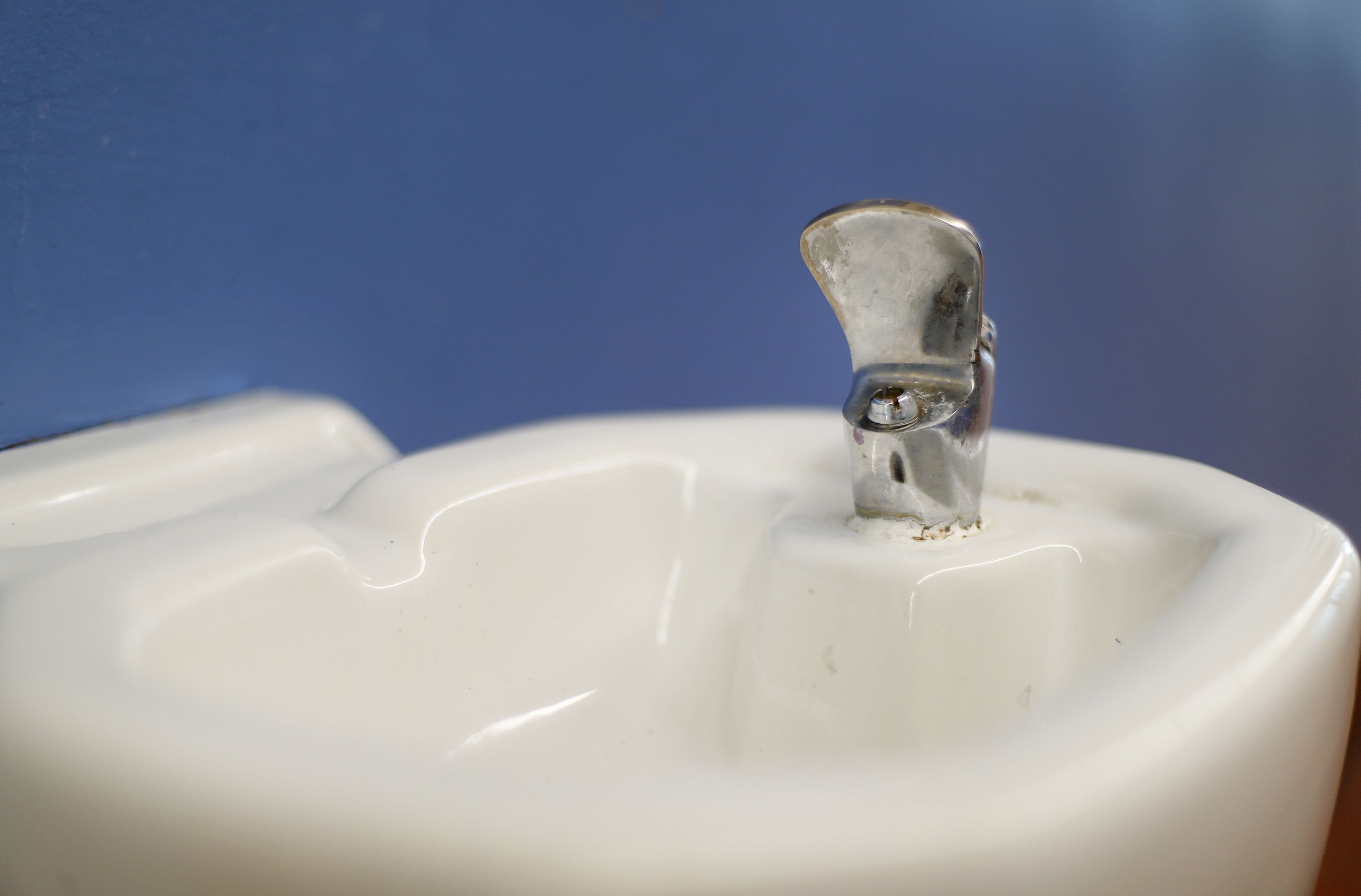Tap water treatment
From the Trinity River to our faucets, here's how tap water in Tarrant County is treated.
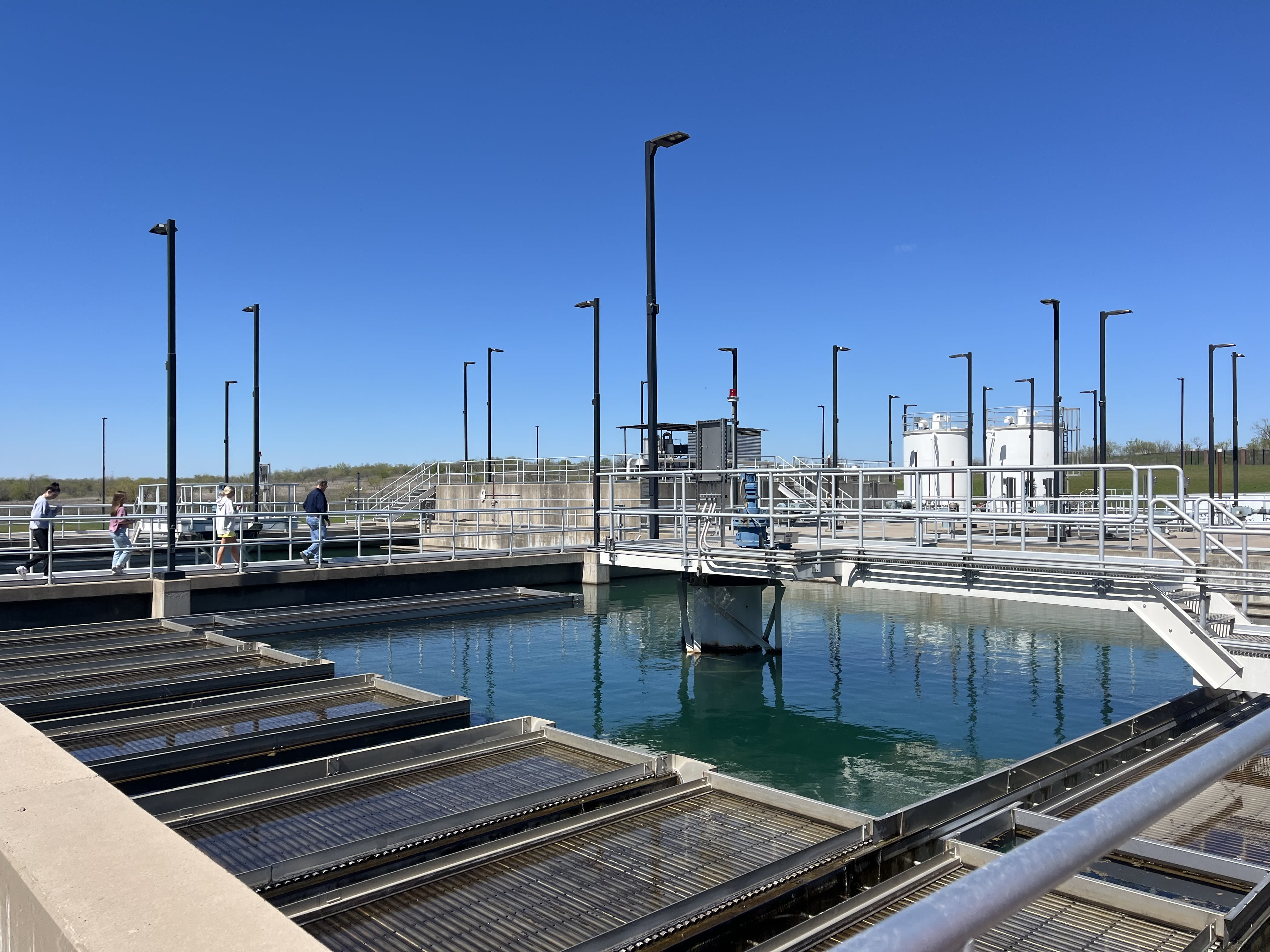
The treatment process for tap water in Tarrant County is extensive. It differs from surrounding North Texas cities such as Dallas, Arlington and Denton as each has its own source and testing, which results in different quality and contaminants.

The treatment process
Tap water treatment is a long process including coagulation, flocculation, sedimentation, filtration, and disinfection.
During coagulation, chemicals with a positive charge are added to the water.
In the next step, flocculation, water treatment plants add more chemicals to help form larger and heavier particles known as flocs.
After flocculation, solids are separated from the water in the sedimentation phase. During this process, the flocs settle to the bottom of the water.
The next step is filtration, which happens once the flocs are settled at the bottom of the water. The clear water on top passes through filters of different pore sizes and materials, removing dissolved particles such as bacteria and viruses. Some water treatment plants may also use the process of ultrafiltration, where the water goes through a filter membrane that has small pores and only lets through water and small chemicals.
Image courtesy of Fort Worth Water Utility
A multi-barrier approach is used in treating drinking water, said Mary Gugliuzza, the Media Relations Coordinator at City of Fort Worth Water Utility.
"The treatment process may vary between utilities based on source water quality," Gugliuzza said. "Licensed water treatment operators perform testing at each treatment plant for quality control. The quality control testing is done throughout the day and at different points in the process."
Gugliuzza said Fort Worth's central lab performs additional testing.
"This testing is done at the entry point from treatment plant to the distribution system as well as in the distribution system."
Plant operations may sometimes request the lab to perform additional supplemental testing.
"The water laboratory performs about 16,000 tests a year on drinking water," Gugliuzza said.
Testing methods to determine water quality
Photo by Silvan Schuppisser on Unsplash
Photo by Silvan Schuppisser on Unsplash
According to Gugluizza, there are numerous laboratory tests that are performed to determine the quality of the water.
"Testing is done on the source water as well as the finished drinking water," Gugluizza said. "The type of test varies based on what is being tested. There are specific tests for bacteriological contaminants, metals, and inorganic compounds, radiological compounds."
Safe Water Drinking Act
While each city in Fort Worth varies in their exact tap water treatment processes, the water produced always falls within the standards set by the federal Safe Water Drinking Act. This act was signed in 1974 during the Nixon administration and ensures the quality of Americans’ drinking water. There are five key aspects of the SWDA.
The first is the protection of underground sources of drinking water. The Environmental Protection Agency sets minimum standards for state programs to protect underground sources from being contaminated by injection wells (wells where waste is injected into the ground).
The second is the control of drinking water contaminants; the EPA is required to determine maximum contaminant levels for certain harmful substances in drinking water.
Third is the public notification and right-to-know components. Water utilities must provide an annual "Consumer Confidence Report" to customers, which identifies contaminants found in local drinking water and health effects of these contaminants.
The fourth is funding for water system improvements; the Act established a federal-state partnership to help public water systems finance needed infrastructure upgrades.
The fifth is the requirement for a source water assessment. States must assess the sources of public drinking water to identify potential threats and develop strategies to protect against these threats.
Overall, the goal of SDWA is to protect public health by regulating the nation's public drinking water supply and protecting sources of drinking water.
Mary Gugliuzza discussed how The Clean Water's Act is just as important when it comes to the quality of water.
"Drinking water quality starts with source water quality," Gugliuzza said. "That is why it is important to keep contaminants out of lakes, rivers, creeks, and aquifers."
Gugliuzza noted that this is the purpose of The Clean Water Act as well as controlling the discharges into water sources.

Each state is different
Since every state and county has different ways of treating tap water, they have different ways of meeting the SDWA standards.
There are also different variations of the Environmental Protection Agency; the Texas Commission on Environmental Quality is Texas' environmental agency. From the agency, Kendall Kotara, Region 4-DFW Environmental Investigator; and Crystal Watkins, Team Leader for Region 4-DFW Public Water Supply Team were willing to interview, but were not timely.
West Side Water Treatment
West Side Water Treatment Plant (Emmaday Ormond)
West Side Water Treatment Plant (Emmaday Ormond)
The West Side Water Treatment Plant in Aledo, Texas, has an extensive tap water treatment process.
Raw water is pumped from lakes and ammonia is added in the first phase. Without ammonia, ozone gas and water can cause bromate. Ozone gas is added, then aluminum chlorohydrate and fluoride. The water is then filtered through a bed of anthracite and pushed through membranes, disinfected with liquid chlorine, liquid ammonia and high service pumps. According to the West Side Water Treatment Plant workers, hard water is easy to treat. Cedar Creek in Texas contains a large amount of soft water and less minerals and corroded metal. Lake Benbrook and Richland chambers contain hard water. Lake Palestine contains softer water than Cedar Creek.
The process of cleaning tap water
There is not only a treatment process for water, but there is also a process for tap water being cleaned. According to Gugliuzza, the process in Fort Worth starts with adding ozone to kill bacteria and viruses. She notes that adding ammonia prior to ozonation helps decrease bromate formation.
"Chemicals, called coagulants and polymers, are added to the water to cause small particles to adhere each other, forming clumps," she said. "This process is called flocculation. In the sedimentation bases, the particles, called floc, settle to the bottom of the basin and are removed. A small amount of fluoride is added to the amount naturally present for dental health."
In the next part of the process, water is filtered through four feet of biologically active charcoal filters.
"At the Westside Water Treatment Plant, the water then passes through membrane filters," Gugliuzza said. "Monochloramine is added to provide disinfection all the way to your faucet. The chlorine kills bacteria and viruses. Ammonia is added to reduce the chlorine odor and the amount of regulated disinfection byproducts created."
The water is temporarily stored in tanks, called clearwells, before it is pumped to the public.
The taste of tap water
The organic compound Geosmin is commonly found in Texas Lakes during winter months which can cause changes to the taste of the drinking water. Although this organic compound is not harmful to human health, it does have a distinct earthly taste and particular smell that can affect the taste of tap water.
Cities are aware of Geosmin, however, they are not always able to remove the organic compound from the water.
The Tarrant County Regional Water District performs regular water quality monitoring, but they ultimately do not treat the water for drinking. Once the water is delivered to customers' water treatment plants and storage lakes in Tarrant County, the city then treats that water for its customers.
Mary Gugliuzza gave us more insight to the factors that contribute to the taste of tap water.
"Every water source has its own distinct taste characteristics," Gugliuzza said. "This means customers may detect a change in the taste and smell of their water when there is a change in the source water. Some customers are more sensitive to this than others. There is no water quality issues associated with these changes."
Gugliuzza spoke about chemicals being one of the factors that affects the taste of tap water.
"Some algae and bacteria give off non-toxic, smelly chemicals that can cause unpleasant tastes in drinking water," she said. "These can range from earthy-musty to grassy, or swampy."
Gugliuzza also noted that the taste of tap water does not mean a decline in the quality of the water, but the taste and oder can affect perception of the drinking water's safety.
Photo by Sydney Brunson
Photo by Sydney Brunson
Photo by Sydney Brunson
Photo by Sydney Brunson
Photo by Sydney Brunson
Photo by Sydney Brunson
Photo by Sydney Brunson
Photo by Sydney Brunson
Photo by Sydney Brunson
Photo by Sydney Brunson
Photo by Sydney Brunson
Photo by Sydney Brunson
The taste of tap water impacted by the water treatment process
A dry water fountain is shown at Gardner Elementary School in Detroit, Tuesday, Sept. 4, 2018. Some 50,000 Detroit public school students will start the school year Tuesday by drinking water from coolers, not fountains, after the discovery of elevated levels of lead or copper — the latest setback in a state already dealing with the consequences of contaminated tap water in Flint and other communities. (AP Photo/Paul Sancya)
A dry water fountain is shown at Gardner Elementary School in Detroit, Tuesday, Sept. 4, 2018. Some 50,000 Detroit public school students will start the school year Tuesday by drinking water from coolers, not fountains, after the discovery of elevated levels of lead or copper — the latest setback in a state already dealing with the consequences of contaminated tap water in Flint and other communities. (AP Photo/Paul Sancya)
The water treatment process affects the taste of tap water in a positive way, Gugliuzza said.
"Fort Worth uses ozone for primary disinfection at all of its treatment plants," Gugliuzza said. "Ozone can actually help reduce taste and odor issues by reducing the organic matter in water that can lead to taste and oder."
Gugliuzza also discussed how some systems use free chlorine instead of monochloramines as secondary disinfection -noting that free chlorine might be smelled more than monochloramines.
Arlington ranks among the best cities in Texas for tap water
When considering tap water treatment specifically, the city of Arlington won the best annual water drinking award from the Texas water utility association in 2021. This leads to questions of what Arlington does differently to treat their water, how Tarrant County can improve tap water quality and what efforts are being made toward those improvements.
In the years since, Arlington is still ranked among the best cities in Texas for tap water, likely because the city uses ozonation in which ozone is used to remove contaminants and pollutants from the water. After this process, the water is cleaned through biologically active filtration which uses beneficial bacteria to clean water. This is one example of how treatment processes differ and ultimately result in Tarrant County being ranked in tap water.
